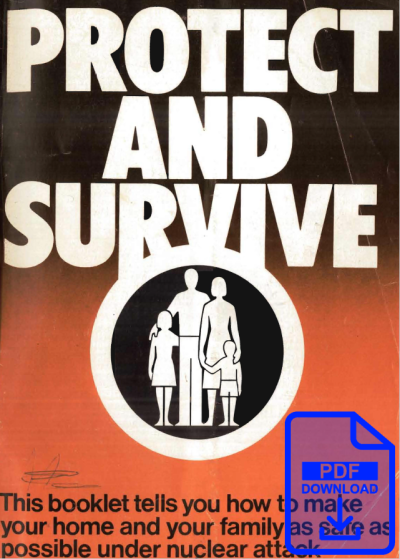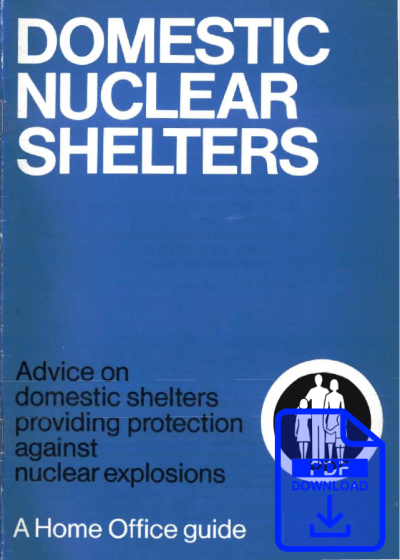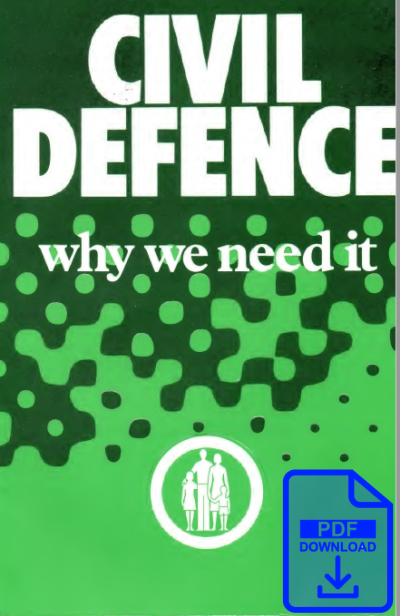
Protect and Survive
Following the disbandment of the Civil Defence Corps, Industrial Civil Defence Service, Auxiliary Fire Service and National Hospital Service Reserve, in 1968, little information relating to civil defence was available to the general public, except for the WVS/WRVS "1 in 5" campaign.
In the late 1970s and early 1980s an attempt was made by the government to rectify the situation, the result was "Protect and Survive". "Protect and Survive" was the title of a booklet and a Public Information Film series produced by the British government, dealing with emergency planning for a nuclear war.
Initially it was intended that the booklet would be issued during any period of international tension suggesting the possibility of war. If such an attack had been deemed likely by the Government during any period of international crisis, a copy of the "Protect and Survive" booklet would have been distributed to every home in the UK, and the films would have been transmitted on domestic television. Due to public pressure it was made available to the public in 1983. The films were not shown.
The purpose of the programme was to provide members of the public with instructions on how to protect themselves and survive a nuclear attack. The booklet and the films detailed a series of steps to be undertaken by the public to improve their chances of survival during a nuclear attack. These included the recognition of attack warning, fallout warning, and all-clear signals, the preparation of a home "fallout room" and the stockpiling of food, water, and other emergency supplies.
"Protect and Survive" was simply designed, easy to understand, and similar to the advice of most other emergency planning authorities, in the West, of the time. The basic content of both the booklet and the films differed very little from that in "Civil Defence Handbook No 10", and of the Civil Defence Bulletins from the 1960s. In the USA a number of similar programmes were produced the most famous being "Duck and Cover" which was targeted at primary school children. In the opinion of some contemporary critics, however, the "Protect and Survive" films were deeply and surprisingly fatalistic in tone.

